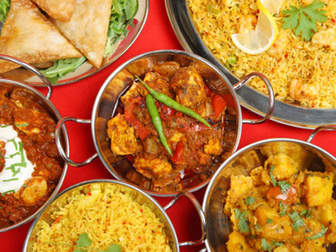Carbohydrates are the simplest molecules that provide energy for routine activity. They are of two types- the simple sugars which are easily digestible nevertheless lead to spike in the blood glucose levels and instant energy, and the complex carbs or the healthy sugars which are relatively slower and steadier in releasing energy. Carbs are found in cereals, pulses, fruits, vegetables, dairy etc. They form the staple Indian diet. The cereals are rice, wheat, oats and millets. The Indian population has for ages consumed rice and wheat as the staple diet. Oats came thereafter, claiming to reduce blood cholesterol, and with cholesterol no more on the list of agents implicated in heart attacks, consumption of oats has reduced.
Millets is the latest most often discussed food. As is the norm, certain foods are hyped and the general public are given to believe that it is a superfood. So it was with oats, which died a natural death. Ragi as it is known in this part of the country has been the staple food in villages in south India for ages especially in the farming regions of Karnataka. It is customary to eat or drink Ragi in some form for breakfast. Ragi balls with jaggery were childhood favorites. Ragi is otherwise called the finger millet. The other widely used millet is the pearl millet. Pearl millet is promoted as a super baby food.
Are carbohydrates as essential to our body that people have to consume them as a staple diet? Or can they opt out and experiment with other forms of diet? This is the question for introspection. Has there been holistic health and wellness as a consequence of the prevalent staple rice and wheat diet?
Man was designed to be on the move eating and drinking whatever was available. He had to run and hunt animals, gather fruits and berries and leaves, ever vigilant and fit to fight predators, to safeguard his community and to invade and capture territories. On the whole the body was constantly moulding and adapting to to the pressures put upon the skeletal and cardiac systems. His food consisted of all the animals that he hunted along with plenty of fruits, vegetables and foliage. Then, when man gained ownership, he settled down and had his lands and herds. He became an agriculturist, his activities changed, nevertheless, lot of physical activity was still a part of farming. As he grew more grains, pulses, fruits and vegetables, his diet pattern changed. He had slaves and the more evolved labour force for farming and herding cattle. He consumed grains, vegetables, fruits, meats, fish, egg, diary etc. The food pattern had without his knowledge evolved from a more protein, more fat diet into one that was more grains. This is the evolution of the present diet.
Now the South Indian diet cannot do without idli, dosa, aapam, idiappam and puttu. There is a sense of dissatisfaction if these are omitted in the menu for breakfast. Accustomed to these dishes people are looking for some kind of variety in them. People have been trying out recipes as an option to rice since rice has taken the blame for most of maladies affecting the human population today.
Of great interest is the group of grains called millets. These are a group of crops which can be easily cultivated. It does not need any special manure, and can be grown twice a year. Moreover it is gluten- free. Also finger millet is one of the richest sources of Calcium even higher than which is available in dairy products. When compared to other staple diets, finger millet consumption increases calcium bioavailability. This group of complex carb have more iron than the staple diet of rice and wheat. Mixed millets can be made into a batter and made to ferment just like the conventional idli dosa batter, but it can be used refrigerated for around 5-7 days only.
Whatever be the health trends, there are very few in India who would vouch for a diet without rice and wheat except those who have a problem with gluten. And in this group, millets is a welcome change from the routine. A small focus of change in this whole grain diet should be the importance given to a balanced diet with much more proteins and good fats, with the right balance of micronutrients like vitamins and minerals. This will go a long way in maintaining the insulin pumping capacity of the pancreas for a lifetime.
India has to move in this direction.

